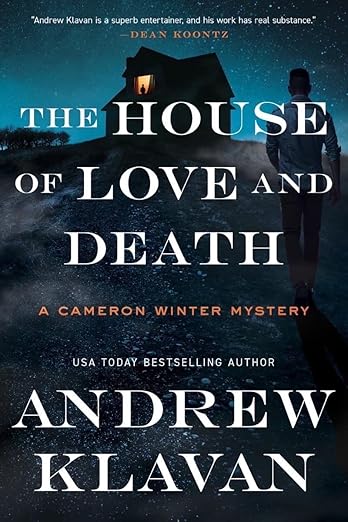Killers of the Flower Moon: Oil, Money, Murder and the Birth of the FBI
From the bestselling author of The Lost City of Z, now a major film starring Charlie Hunnam, Sienna Miller and Robert Pattison, and the Number One international bestseller The Wager, comes a true-life murder story which became one of the FBI’s first major homicide investigations. In the 1920s, the richest people per capita in the world were members of the Osage Indian nation in Oklahoma. After oil was discovered beneath their land, they rode in chauffeured automobiles, built mansions and sent their children to study in Europe. Then, one by one, the Osage began to be killed off. As the death toll climbed, the FBI took up the case. But the bureau badly bungled the investigation. In desperation, its young director, J. Edgar Hoover, turned to a former Texas Ranger named Tom White to unravel the mystery. Together with the Osage he and his undercover team began to expose one of the most chilling conspiracies in American history.
A Gripping Tale of Greed, Murder, and Justice
David Grann's "Killers of the Flower Moon: Oil, Money, Murder and the Birth of the FBI" is an exceptional work that blends true crime, historical exploration, and a poignant commentary on racial injustice. Winner of the Edgar Award for Best Fact Crime and shortlisted for prestigious honors like the Andrew Carnegie Medal and CWA ALCS Gold Dagger, this book has left an indelible mark in the realms of non-fiction literature.
Synopsis: Set against the backdrop of the Osage Indian nation in Oklahoma during the 1920s, "Killers of the Flower Moon" unveils a sinister conspiracy involving oil, wealth, and a series of chilling murders. The Osage people, once the richest per capita in the world due to oil discovered beneath their land, found themselves targeted in a wave of mysterious deaths. The FBI, in its early days, became involved in the investigation, revealing a shocking tale of greed, corruption, and systemic racism.
Historical Exploration and Injustice: Grann's narrative skillfully intertwines historical context with a crime investigation, shedding light on a forgotten chapter in the American West. The Osage murders become a lens through which the author explores the racial injustice prevalent during that era. Grann unveils the social fabric of the time, exposing the layers of exploitation and discrimination faced by the Osage people even in the midst of their newfound wealth.
Meticulous Research and Riveting Storytelling: The strength of "Killers of the Flower Moon" lies in Grann's meticulous research and his ability to transform historical facts into a riveting narrative. The author's attention to detail creates a vivid and immersive reading experience, allowing readers to step into the shoes of the Osage victims and the investigators trying to unravel the mystery. Grann's storytelling prowess ensures that the book reads like a suspenseful mystery, despite being a non-fiction account.
Critique of Law Enforcement and Pursuit of Justice: The narrative delves into the early days of the FBI, highlighting its flaws and the challenges it faced in confronting a conspiracy of this magnitude. J. Edgar Hoover's decision to turn to former Texas Ranger Tom White adds an additional layer of intrigue to the story. Grann critically examines the actions and missteps of law enforcement during this investigation, offering a nuanced portrayal of the pursuit of justice in the face of corruption.
Influence on American History: "Killers of the Flower Moon" is not just a true crime story; it is a profound exploration of a pivotal moment in American history. The impact of the Osage murders reverberates beyond the pages of the book, forcing readers to confront the darker aspects of the nation's past. The book serves as a compelling reminder of the need for justice and the ongoing struggle against racial inequality.
Conclusion: David Grann's "Killers of the Flower Moon" stands as a masterful work that seamlessly combines historical investigation, true crime, and a critical examination of racial injustice. The book's accolades, including the Edgar Award, reflect its significance and the impact it has had on readers. Grann's ability to unravel a complex narrative with depth and nuance ensures that "Killers of the Flower Moon" transcends the true crime genre, becoming an essential read for those seeking to understand the intricacies of America's past and the pursuit of justice in the face of unspeakable crimes.
How can you read this book?
Click these simple buttons to read this book today.
You may like these books... Buy now!

|

|

|
David Grann, American journalist, staff writer for The New Yorker, and author. ![]()
Unveiling the Mysteries of History through Gripping Narratives
Discover the world of David Grann, an acclaimed American journalist, staff writer for The New Yorker, and an author who has left an indelible mark on the literary landscape. Born on March 10, 1967, Grann has spent his career weaving captivating narratives that unravel the complexities of historical events and human intrigue.
Grann's journey into the realm of storytelling began with his first book, The Lost City of Z: A Tale of Deadly Obsession in the Amazon, published by Doubleday in February 2009. This gripping exploration of British explorer Captain Percy Fawcett's disappearance in the Amazon captivated readers worldwide, earning Grann a spot on The New York Times bestseller list and subsequent acclaim.
His journalistic prowess extends beyond books, with Grann's articles collected in prestigious anthologies, including What We Saw: The Events of September 11, 2001, and The Best American Crime Writing of 2004 and 2005. A workhorse reporter, Grann's contributions to publications such as The New York Times Magazine, The Atlantic, and The Washington Post have solidified his reputation as a captivating storyteller with a devoted readership.
Born to Phyllis and Victor Grann in 1967, David Grann developed an early passion for the written word. He graduated from Connecticut College in 1989 and went on to earn a master's degree in international relations from the Fletcher School of Law and Diplomacy at Tufts University in 1993. While initially interested in fiction, Grann's career took a turn toward journalism as he began his journey as a freelance journalist in Mexico, supported by a Thomas J. Watson Fellowship.
Grann's journalistic career took root in Washington, D.C., where he served as a copy editor at The Hill. Subsequently, he held editorial positions at The New Republic and The New Yorker, where he has been a staff writer since 2003. His commitment to investigative reporting and excellence in journalism earned him the George Polk Award and the Sigma Delta Chi Award for the New Yorker piece "Trial By Fire" in 2009.
In 2017, Grann's book Killers of the Flower Moon: An American Crime and the Birth of the FBI delved into the chilling Osage Indian murders, earning him a finalist spot for the National Book Award and reaching #1 on The New York Times bestseller list.
Grann's latest literary offering, The Wager: A Tale of Shipwreck, Mutiny and Murder, published in April 2023, continues his tradition of unveiling historical mysteries with unparalleled storytelling. Debuting at #1 on The New York Times bestseller list, it has garnered praise as one of the finest nonfiction books by reviewers and even captured the attention of former President Barack Obama.
As a devoted family man with two children, David Grann's literary legacy is marked by his ability to transform historical events into compelling narratives that resonate with readers around the globe. Join the journey into the past through the lens of David Grann's masterful storytelling.





